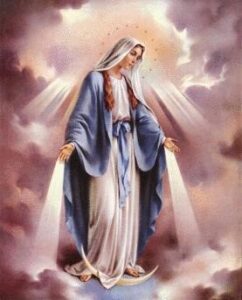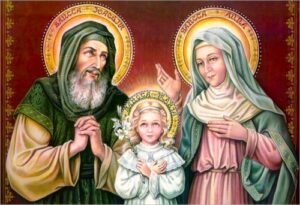The Feast of the Nativity of the Blessed Virgin Mary is celebrated in the Roman calendar of Saints on 8 September, exactly nine months after the Immaculate Conception of Mary. Its history dates back to at least the sixth century when St. Romanos the Melodist, an Eastern Christian, composed a hymn for the feast. The feast spread to Rome in the seventh century when it was celebrated as the Birth of the Blessed Virgin Mary, but it was a couple more centuries before it was celebrated throughout the West. Perhaps because of its close proximity to the feast of the Assumption of Mary, the Nativity of the Blessed Virgin Mary is not celebrated today with the same solemnity as the Immaculate Conception. It is, nonetheless, a very important feast, because it prepares the way for the birth of Christ.
Dr Francois Bothma informs us that the birth and early life of the Virgin Mary is not recorded in the Gospels or other books of the New Testament, however, this information can be found in a work dating from the second century known as the Book of James or Protevangelion. As an Independent bishop of the Home Temple Group in Australia, Francois has shown an interest in all major figures surrounding the Master Jesus, central to the teachings of the Home Temple Group. Dr Bothma was born in South Africa, but after spending time in the United Kingdom, finally settled in Orange, Australia during 2016. In 2012 he was consecrated as a bishop by Dr Lewis Keizer, which reflects his commitment to spiritual studies. The rest of his time is spent as a dentist at Kite Street Dental in Orange.
A special interest of his is the mother of Jesus, as she is such a central figure in the church. According to the story found in the Book of James, Mary’s parents, Joachim and Anna, were childless for many years. Despite the fact that their prayers for a child were unanswered, they remained faithful to God. One day, when Joachim came to the temple to make an offering, he was turned away by the High Priest who chastised him for his lack of children. To hide his shame, Joachim retreated to the hill country to live among the shepherds and their flocks.

Even though apart, both Joachim and his wife Anna engaged in prayer at the same time. An angel appeared to both of them in their respective locations and announced that Anna would have a child whose name would be known throughout the world. Anna promised to offer her child as a gift to the Lord. Joachim returned home, and in due time Anna bore a daughter, Mary (Many of the same details appear also in the later apocryphal Gospel of the Nativity of Mary.)
The Feast of the Nativity of Mary acknowledges the symbolism of a transition from barrenness to life. This is a foreshadowing of what would be offered through Christ, the transformation from death to eternal life.
The Virgin Mary is often associated with Binah, the giver of life. Her name has etymological connections to the Latin “mare”, which translates to “sea.” St. Jerome was the earliest Christian writers to prominently mention this connection and the imagery for the famous Marian hymn Ave maris stella (Hail, Star of the Sea) is attributed to him. Mary therefore has an overt connection to the ocean and the womb. In Genesis 1:2, it is said that “the Spirit of God moved across the waters” and brought life from chaos.
In her aspect of the Great Mother in Binah, she becomes “the door of life,” through whom all things are born. She gives birth to Christ who in Christianity resembles ‘Sacred Life”. In accepting the Divine Will to Live, she accepts the Life Force barely defined in Chockma (the original impartial point of existence extending its energy outwards) and confines that energy in her metaphorical womb.
Her understanding of the proper course for Life is acknowledged, she is equal to the Father, represented in Chokhmah, and becomes the final direct expression of the Will to Eminate, contained in Kether. By her means, Kether is able to manifest itself in space and time, and thereby experience itself as a made Being.
In this way, the Virgin Mary shows us the Way of God, also expressed in the life of Christ. She takes the role of our Guide, our Guardian and our Mother. In gaining knowledge of the Mother we may come to knowledge of the Father/Son, and through knowledge of Him, we attain knowledge of God.
The following simple prayer may provide comfort in times of need:
Hail Mary, full of grace.
The Lord is with thee.
Blessed art thou amongst women,
and blessed is the fruit of thy womb, Jesus.
Holy Mary, Mother of our Lord Jesus Christ,
pray for us now, and in the hourof our victory over sin, disease and death.
Amen.


